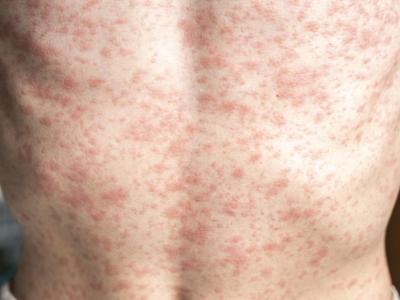Analysis finds thin link to pregnancy, ethnicity and severe flu
Evidence of some risk factors such as pregnancy and ethnicity for a severe outcome in patients with seasonal and pandemic influenza is largely limited or absent, which has implications for public policies regarding prioritization of groups for vaccination programs, according to a recent meta-analysis.
Obesity and the postpartum period were potentially important risk factors that should be included in future vaccination recommendations, though others weren't backed by evidence, according to the research team, which is based at Canada's McMaster University. Their findings appeared in the Aug 23 issue of BMJ.
The researchers identified 234 articles in the literature representing 610,782 participants that met their inclusion criteria. They focused on studies reporting on at least one risk factor in patients with lab-confirmed flu or flulike illness during a period of known flu circulation.
Evidence supporting some of the risk factors for flu complications was low, and some could not be confirmed. Researchers found that many of the studies lacked sufficient power to show an association, and some didn't adjust for confounders.
Elderly people had the highest risk of death for both seasonal and pandemic flu. Pregnancy increased the risk of hospital admission but not other outcomes, although the data suggested that risk increases in the late stages of pregnancy.
Obesity (body mass index greater than 30) is an important cause of death with both seasonal and pandemic flu, they found, but the group noted that it's unclear whether the obesity itself or comorbidities associated with obesity are responsible.
No significant differences were noted in all-cause mortality between Asian, black, or native populations compared with whites, although Hispanic and black individuals as well as pregnant women were more likely to have been hospitalized during the 2009 pandemic.
Chronic illness (immunosuppression, cardiovascular disease, chronic lung disease, neuromuscular disease, neurologic disease, chronic renal disease, and metabolic diseases) increased the risk of mortality.
The analysis seems to support flu vaccination recommendations that prioritize immunizing pregnant women and older people, but the evidence didn't appear to strongly support prioritizing young children over adults.
Researchers concluded that policymakers should acknowledge the poor quality of evidence supporting flu vaccine recommendations for some risk groups and include the level of evidence in their guidance, especially when vaccine supplies are limited.
The team also noted that the quality problems they identified underscore the importance of conducting rigorous studies when exploring flu-related complications.
Aug 23 BMJ abstract
H7 outbreak hits third Italian poultry farm
Italian veterinary authorities have detected a third H7 avian influenza outbreak at a poultry farm in the country's northern Emilia-Romanga region, according to an Aug 23 report to the World Organization for Animal Health (OIE).
The virus was detected at a turkey farm in Ferrara province during surveillance activities that began at the site where the virus was first detected, a town called Ostellato, which is about 10 miles from Portomaggiore, where the turkey farm is located.
Polymerase chain reaction testing was positive for H7, and further tests are under way to determine the virus's pathogenicity and neuraminidase type, according to the OIE.
The outbreak began on Aug 21, killing 1,300 of 19,850 susceptible birds. The rest will be culled to control the spread of the disease. So far the source of the virus is unknown.
The virus was detected at the first farm in the middle of August. It turned up for a second time at a layer farm in Bologna province a few days later.
The highly pathogenic H7N7 strain has been detected sporadically in European wild birds and poultry. It sparked a 2003 outbreak in humans in the Netherlands that was linked to at least 89 mild infections and one death.
Aug 23 OIE report
Aug 21 CIDRAP News scan "Highly pathogenic H7N7 detected in Italian poultry outbreaks"










